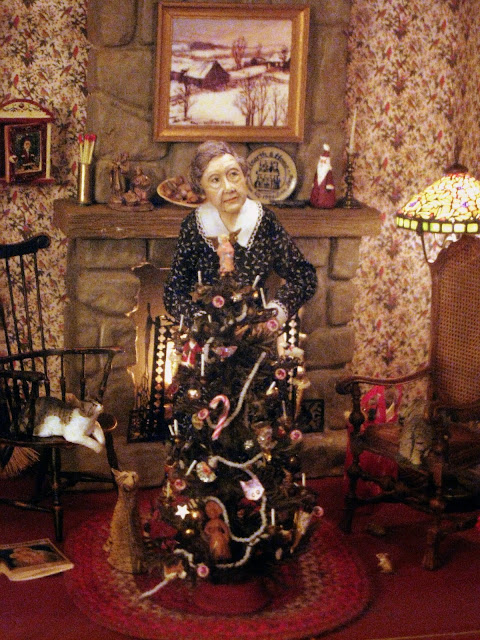 |
| Verrocchio's David painted to look like the original |
Much of the time your printed statues will be done with white plastic which paints up surprising well. If you want a more natural finish to which you don't need to do a lot painting, have it printed in brown.
 |
| St. Jeanne was printed in brown plastic and then I highlighted it to help bring out the details. |
Most finished 3D printed pieces are not smooth. They have
striations from the printing process. To minimize these, I first either sand or
scrape with an X-Acto blade to even out the area. Then I paint the piece with
gesso. If the striations are particularly
noticeable, you need to use Liquitex modeling paste which helps you fill in the
minor gaps and dries hard.
For painting bronze pieces, I use Modern Options Blackened
Bronze Base. (I used this years ago for some larger plaster pieces and it works
great as a base.) A dark brown acrylic paint would do something similar. For more of a bronze/gold look as with the Night statue and the Sphinx, I then rub on
DecoArt Metallic Lustre (Iced Espresso). Go light at first and continue till
satisfied. If you want the greenish bronze like the Egyptian cat above, I do a wash of DecoArt Moss Pearl
Metallic acrylic paint.
 |
| The figure, statue of Mars, ram-headed chair, and Caesar bust are all 3D printed. |
For marble, I tend to use the Martha Stewart Wet Cement
Satin Acrylic, lightened with white. When dry, I do a light wash of burnt umber
acrylic or a grey acrylic. I spend a lot time at Michael’s comparing pictures
of similar full-scale pieces with the paints available.
A technique I found online with people doing military
figures is adding a tiny bit of denatured alcohol to the acrylic paint. It
helps create a wash.
If your finished
piece is too shiny, use Liquitex Ultra Matte Gel.
These are some things that helped me with my painting.
Painting figures:
https://www.youtube.com/watch?v=GSnbLdNZ-ls\
Painting statues:
https://www.youtube.com/watch?v=OzLpt7iNeLM
















































